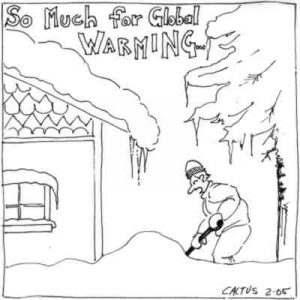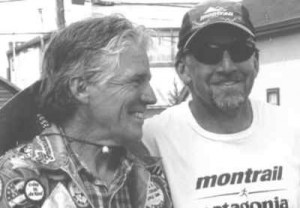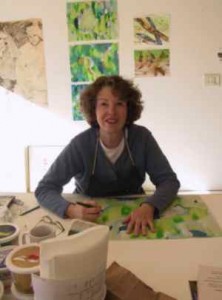Column by George Sibley
Local Prospects – February 2005 – Colorado Central Magazine
THERE’S A LOT OF BUZZ these days about a “Creative Class.” This alleged socioeconomic class is the discovery of Richard Florida, a professor of Regional Economic Development at Carnegie Mellon U. in Pittsburgh, one of my old alma maters (I schlepped around in my school years).
Florida’s ideas are laid out in one of those books more discussed than read, The Rise of the Creative Class, and how it’s transforming work, leisure, community and everyday life. What he thinks he has discovered is an evolving socioeconomic class that supplants, or at least supplements, the 20th century’s Working Class and Managerial Class (remember “the Organization Man”?), and is our hope for cultural vitality in the 21st century.
According to Florida, “if you are a scientist or engineer, an architect or designer, a writer, artist or musician, or if you use your creativity as a key factor in your work in business, education, health care, law or some other profession, you are a member” of the Creative Class, or “CC.”
His main point is that intelligent local economic development is no longer a matter of “developing a favorable business climate” through building business parks, offering tax incentives and other such standard operating procedures; the challenge is to create a good “people climate” that will attract this CC, and the economic development will follow, both from things the creative people “start-up” and from companies that will come looking for creative people.
The question here is whether this might mean anything in Central Colorado. Florida’s focus is so narrowly metro-urban that he considers Boulder to be sort of “rural.”
But the fact is, a lot of the kind of CC people Florida describes have been finding their way to towns and outbacks in places like Central Colorado for a long time, and some of those towns have a lot of the “lifestyle” characteristics and qualities of the “people climate” Florida describes as being attractive to the CC. It’s basically what the demographic shift called the “nonmetropolitan population turnaround” has been all about – the movement of people since the 1960s from metropolitan places into interesting non-metro places that (for those places) reversed the country-to-city movement prevalent since the 1830s.
According to Florida, the “people climate” of cities attractive to the CC grows out of a critical massing of what he calls “the three T’s”: technology, talent, and tolerance. He tends to think of “technology” principally in terms of the economic and physical infrastructure of high-tech industries, and that is not a noticeable strength in Central Colorado, although we do have a lot of the technological infrastructure in place that lone eagles and “electron-product” light industries need to operate – the kinds of businesses that develop and produce billion-dollar software that requires no transportation facilities beyond high-speed Internet and a post office.
Florida sees “the presence of a major research university” as a “huge advantage in the Creative Economy,” concentrating both the technological research and the talent necessary to exploit it in spun-off start-ups, and while we clearly lack that in Central Colorado, we are close to a couple of them, and could, maybe should, be even closer if Colorado ever decides to develop its higher education mish-mash intelligently rather than trying to destroy it.
WESTERN STATE COLLEGE here in Gunnison is actually frustratingly close to being the kind of “creative hub” Florida envisions, despite its mission as a “teaching college,” not a “research institution.” When I came to Western in the late 1980s, the college was operating under instructions to develop innovative undergraduate programs that were interdisciplinary, and that were built around the unique qualities of the college’s natural and cultural setting.
Two major interdisciplinary programs with a regional focus are actually developing out of that mandate: outdoor recreation and environmental studies. But both programs are still fishing and fumbling for the institutional connectedness – especially with a creative business program – that would fuse Western into a true college preparing people for intelligent lives in the region, rather than just another gaggle of higher-ed disciplines all marching to their own drums. Not a higher-ed problem just with Western, I hasten to add.
Western – along with the mountain environment in general – is attractive to the kind of young people that Florida touts as the basic raw matter of the CC. The college ought to be turning the young individualistic “redneck hippies” it attracts into a host of inspired young entrepreneurs who go out into places like Central Colorado to create the “restoration economy” that other Florida-type gurus are espousing – businesses that do well by doing good in environmental repair, maintenance, and the creation of environment-friendly products and services.
We actually do see a few of those around the region (some from the college) – little start-ups making backpacks or fleecewear, or latching onto Forest Service thinning contracts, or building things with green materials. But the college – and our bordering “research universities” – are not yet really coordinated in putting together the technology and talent for that 21st-century “restoration economy.”
FLORIDA’S THIRD “T” – tolerance – deserves mention. He began to develop his theory about a Creative Class when he noticed that his index of urban places with strong economic development in the 1990s had a high degree of correlation with a colleague’s index of gay-friendly places. Not all creative people are gay, but there’s probably a higher percentage of gays in the CC than in American society in general – just as there is probably a higher percentage of nerds, malcontents, obsessives of all stripes, idiot savants, those physically challenged in some way or another, and other groups who are, by nature or nurture, out of step with what passes for “normal and well-adjusted” in America.
Are the communities of Central Colorado tolerant of people who are out of step with the mainstream? That probably varies from town to town, especially where gays are concerned, but it seems to me that we have a pretty laissez faire culture here. Our publisher is fond of quoting a mountain resident who claimed it wasn’t love of fellow man that led people to mountain towns, but that sort of rocky attitude seems to manifest itself mostly in a willingness to let everybody else go to hell in their own way with neither help nor hindrance from oneself. That’s tolerable tolerance.
The farther I read in Florida, the more I felt he was mostly putting a new wrap on some common wisdom: in interesting times we have always depended on creative people coming together, to strike the flint of their minds against the steel of systems they neither like, nor are particularly liked by. And that process usually starts in “fringe” places – decaying neighborhoods taken over by bohemians, decaying rural towns in beautiful places taken over by post-urban sybarites. And it usually happens around some stimulating beverage or another, so – see you at The Bean, Bongo Billy’s, the Vic or the Brewery. Our class acts.
When he’s not hanging out near coffee or beer, or writing for a variety of publications, George Sibley teaches at Western State College in Gunnison.



